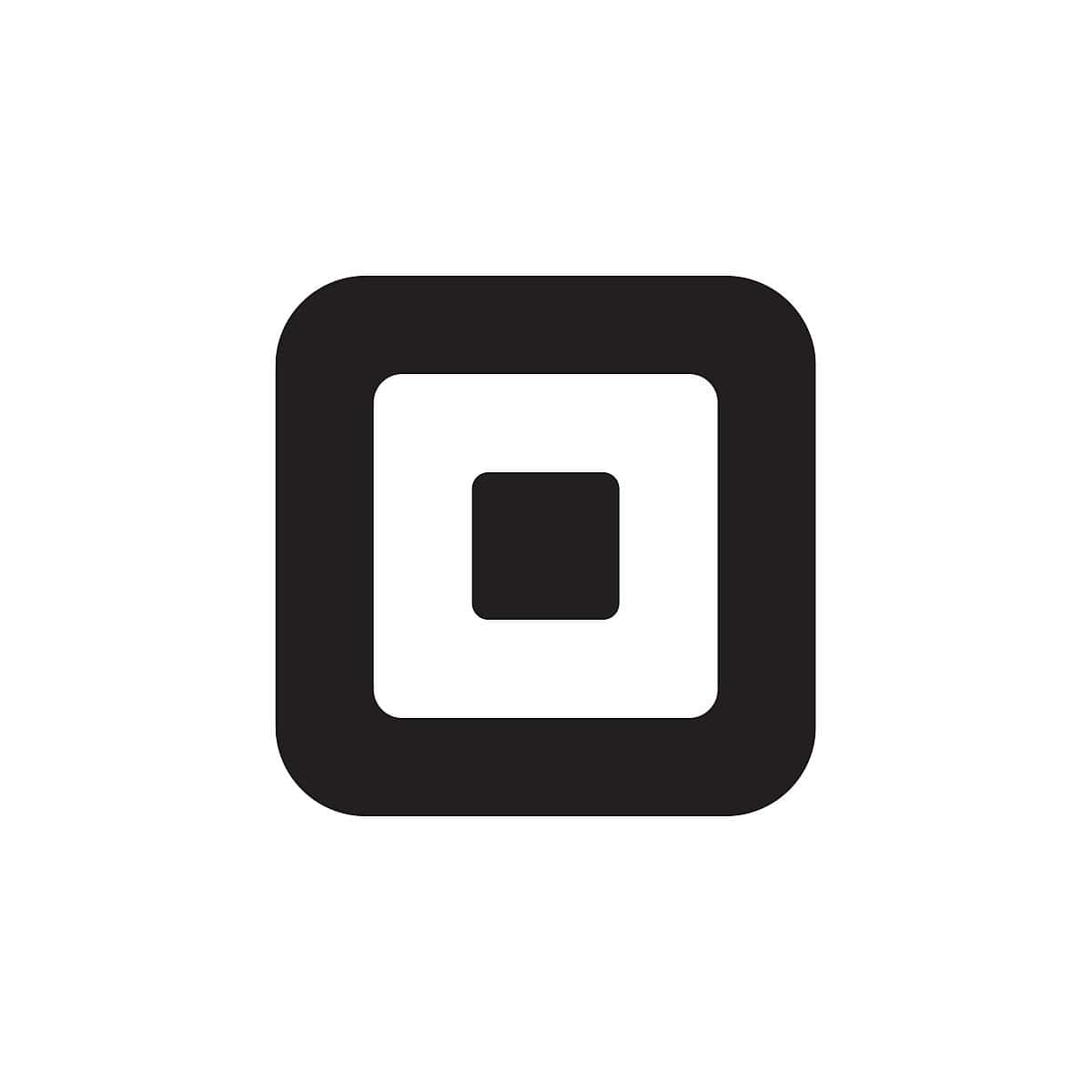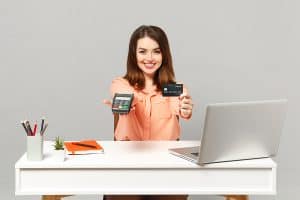The right POS hardware depends on your business type, budget, and goals. This guide breaks down what you need (and what you can skip).
Our content reflects the editorial opinions of our experts. While our site makes money through
referral partnerships, we only partner with companies that meet our standards for quality, as outlined in our independent
rating and scoring system.
Choosing POS hardware isn’t just about what looks sleek on your counter. It’s about finding the right tools to keep your checkout fast, accurate, and reliable.
In this guide, we’ll break down the most common types of POS hardware, what each one does, and which pieces you actually need for your business. You’ll also learn how your hardware works alongside POS software to create a complete, efficient checkout system.
The Best Point Of Sale Hardware For Your Business
The right POS hardware setup depends on your business type, budget, and workflow. What works for a retail store might not make sense for a restaurant or mobile vendor — and vice versa.
Your POS hardware and software work hand in hand. Even the best hardware won’t perform well if your software is slow, outdated, or missing key features. Choose reliable POS software first, then build your hardware setup around it to get the best results.
Guide To Basic POS Hardware
| Hardware Component |
What It Does |
Typical Cost Range |
| Register |
Runs POS software to process sales and manage transactions |
$300 – $1,000+ |
| Tablet Stand |
Holds and protects your tablet; may swivel or face customers |
$100 – $300 |
| Credit Card Terminal |
Accepts chip, tap, and swipe payments |
$50 – $500+ |
| Receipt Printer |
Prints customer receipts (some POS devices have one built in) |
$150 – $800 |
| Barcode Scanner |
Speeds up checkout by scanning items into the POS |
$125 – $250 |
| Cash Drawer |
Stores and organizes cash for transactions |
$100 – $400 |
| Internet Connection |
Keeps all POS components connected and synced |
Varies by provider |
A complete POS hardware setup includes a few essential components, though many systems now combine multiple tools into one. For example, your card reader might also print receipts, or your tablet register might double as a customer display.
Here’s a breakdown of the hardware most small businesses use and what each piece does.
Registers
Today’s POS “register” is often a tablet or lightweight computer running your POS software. iPads are especially popular for their reliability and sleek design, and many providers include them in hardware bundles.
Modern tablet registers take up minimal counter space, are easy to set up, and only need an internet connection and compatible operating system to run smoothly.
Tablet Stands
A tablet stand protects your device and often allows it to swivel toward customers for tips or signatures. Some stands, like Square Stand, can be mounted on a wall for easy access or self-ordering.
If your setup doesn’t include a swivel stand, most systems offer a customer-facing display instead. This is usually a smaller tablet or built-in screen showing the order total, tip options, and receipt confirmation
Credit Card Terminals
Your credit card terminal handles payments and is one of the most important parts of any POS setup.
Options include:
- Basic magstripe readers
- All-in-one readers for chip, swipe, and tap payments
- Small plug-in or Bluetooth card readers
- Full-service terminals that also print receipts
Whichever model you choose, make sure it’s EMV-compliant and accepts NFC/contactless payments like Apple Pay or Google Pay.
Receipt Printers
While digital receipts are increasingly popular, printed receipts are still a must for many businesses.
- Thermal printers are fast and reliable for high-volume businesses.
- Impact printers are better for hot environments like food trucks.
Some mobile terminals — like Square Terminal or Clover Flex — include a built-in printer for on-the-go receipts.
Barcode Scanners
Retail businesses rely on barcode scanners for fast, accurate checkout.
Scanners can be handheld or wireless and often come bundled with your POS hardware. Some systems also include a built-in scanner right in the register terminal.
Cash Drawers
Even in a mostly cashless world, a cash drawer is useful for handling cash transactions.
These drawers typically connect directly to your register and often serve as the base for a tablet stand. They’re sturdy, secure, and still essential for businesses that accept cash.
Internet Connection
Your POS hardware is only as good as your connection.
- Cloud-based systems need a strong, stable Wi-Fi network (and sometimes a backup hotspot).
- Locally installed systems rely on an on-site server that connects your devices via cable or Bluetooth.
Make sure your internet setup matches your POS system type — slow or unreliable service can interrupt sales and reporting.
Industry-Specific POS System Hardware
| Hardware Type |
What It Does |
Best For |
| Scale |
Weighs products and sends totals directly to the POS for accurate pricing |
Grocery stores, produce markets, frozen yogurt shops, laundromats |
| Mobile POS Device |
Lets employees take payments or orders anywhere using a tablet or handheld terminal |
Restaurants, bars, retail floor staff, food trucks |
| Kitchen Display System (KDS) |
Digitally displays orders in the kitchen, replacing paper tickets and improving speed |
Restaurants, cafés, bakeries |
| Digital Signage |
Shows menus, specials, or promotions on digital screens that update in real time |
Quick-service restaurants, breweries, cafés |
| Self-Serve Kiosk |
Allows customers to browse, order, and pay without staff assistance |
Fast-casual restaurants, coffee shops, self-checkout retail |
Not every business uses the same POS setup. Depending on your industry, you may need additional hardware to handle your unique checkout, ordering, or inventory needs.
Here are some examples of specialized POS components used in different types of businesses.
Scales
If you sell products by weight — like produce, coffee, or frozen yogurt — you’ll need a POS-integrated scale.
These scales connect directly to your POS system, letting you ring up items accurately by weight instead of quantity.
They’re also popular with laundromats offering wash-and-fold services and farmers market vendors.
Mobile POS Hardware
Mobile POS devices, such as handheld tablets or smartphones, let your staff take orders or payments from anywhere.
- Restaurants and bars: Used for tableside ordering and payments.
- Retail stores: Used for line-busting or helping customers on the sales floor.
Many providers now offer all-in-one handheld terminals designed for mobility and speed.
Kitchen Display System (KDS)
For restaurants, a KDS replaces printed kitchen tickets with a digital display that updates in real time.
- Orders placed at the counter, table, or online instantly appear in the kitchen.
- Some systems, like Square KDS, run on tablets; others use dedicated screens or monitors.
A KDS helps reduce paper clutter, improve communication, and speed up food prep.
Digital Signage
Digital menu boards and other electronic displays make it easy to update prices, promotions, or limited-time items on the fly.
They’re especially helpful for quick-serve restaurants, breweries, and cafés that update menus frequently.
Self-Serve Kiosk
A self-service kiosk lets customers browse, order, and pay on their own. These kiosks can be iPads, Android tablets, or proprietary touchscreen stations.
They’re popular in fast-casual restaurants, coffee shops, and retail stores where quick, contactless checkout improves the customer experience.
Where To Buy POS Hardware
You can buy POS hardware directly from your provider or through third-party retailers, depending on your system.
- Your POS Provider: Most vendors sell preconfigured hardware bundles that guarantee compatibility with their software. Some systems only work with proprietary hardware, so this may be your only option.
- Third-Party Retailers: If your POS allows it, you can purchase compatible hardware like tablets or scanners separately. This can save money or let you reuse equipment, but always double-check compatibility first.
Leasing POS System Hardware
Avoid leasing your POS hardware if you can. Here’s why:
- Lease payments are typically expensive.
- You won’t own your hardware once the lease ends.
- You could get stuck using a POS system you don’t like for years.
If you can’t afford to buy your hardware outright, consider financing instead. A small business loan or equipment financing plan lets you spread out payments and own your hardware once it’s paid off.
The Bottom Line On POS Hardware
When shopping for POS hardware, think about how your setup will impact your customers’ experience.
Do your customers prefer contactless payments like Apple Pay? Would service be faster if your staff could take orders tableside with handheld devices?
You know your customers best, so let their needs guide your hardware choices more than anything else.
Still need a POS system to pair with your hardware? Check out our guide on how to choose a POS system to find the best fit for your business.
Ready to research vendors? Check out our POS quiz to narrow down your choices.











